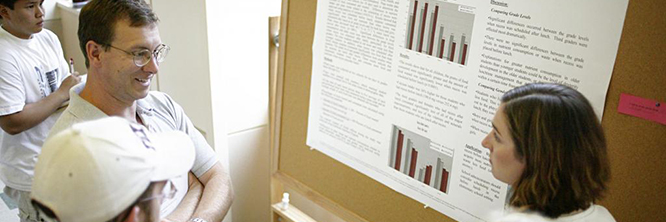Creative and Innovative Leadership Styles During the Covid 19 Pandemic
Document Type
Poster
Event Website
https://source2022.sched.com/
Start Date
16-5-2022
End Date
16-5-2022
Keywords
Innovation, People, Application
Abstract
Creative and innovative leadership, or CIL, is a style of leadership where leaders engage in specific behaviors that foster employee creativity and innovation (Khalili, 2017). As the world has shifted toward a more remote workforce due to the Covid-19 pandemic (Sigahi, et al, 2021), this paper argues that CIL has the potential to positively impact other critically important workplace outcomes. Specifically, this paper explores the direct effect of CIL on the following three employee behaviors; affective well-being, voice, and cyberloafing. This research also examines two moderators; employee gender and the percentage of time spent working remotely. Across a large online survey (N=320) of employees from a variety of occupations, organizations, and industries, we find partial support for our theoretical model (see Figure 1).
Recommended Citation
Singh, Sanjeet, "Creative and Innovative Leadership Styles During the Covid 19 Pandemic" (2022). Symposium Of University Research and Creative Expression (SOURCE). 97.
https://digitalcommons.cwu.edu/source/2022/COTS/97
Department/Program
Psychology
Additional Mentoring Department
Management
Additional Mentoring Department
McNair Scholars Program
Creative and Innovative Leadership Styles During the Covid 19 Pandemic
Creative and innovative leadership, or CIL, is a style of leadership where leaders engage in specific behaviors that foster employee creativity and innovation (Khalili, 2017). As the world has shifted toward a more remote workforce due to the Covid-19 pandemic (Sigahi, et al, 2021), this paper argues that CIL has the potential to positively impact other critically important workplace outcomes. Specifically, this paper explores the direct effect of CIL on the following three employee behaviors; affective well-being, voice, and cyberloafing. This research also examines two moderators; employee gender and the percentage of time spent working remotely. Across a large online survey (N=320) of employees from a variety of occupations, organizations, and industries, we find partial support for our theoretical model (see Figure 1).
https://digitalcommons.cwu.edu/source/2022/COTS/97

Faculty Mentor(s)
Erica Holley, Pamela Nevar